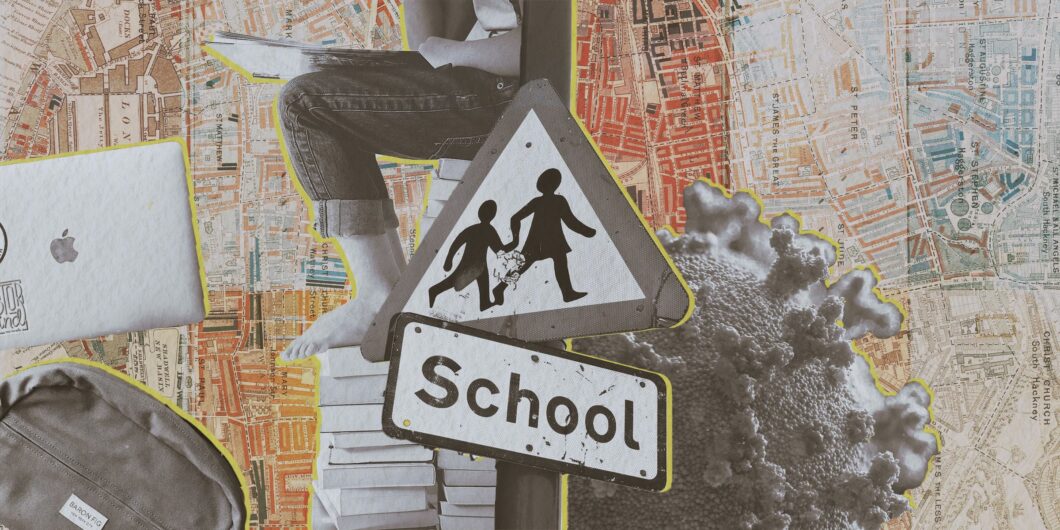The Perils of School Choice
Thomas Sowell famously quipped that “there are no solutions, only trade offs.” Even seemingly beneficial policies have repercussions. Reduce the prison population and crime increases. Close schools to prevent the spread of Covid and standardized test scores plummet. What’s more, even historic, society-altering changes come with side effects. Bring about unprecedented wealth and connectedness with technology, and we all grow addicted to our screens and depressed by them.
Education policies are no exception to this rule. The common school movement of the 1800s represented a fundamental inflection point in the history of education. Activists knew that a thriving democracy requires an educated populace, and a diverse nation needs a common culture to bolster it where factions work to break it apart. As such, early laws required that newly incorporated towns establish a certain plot of land for a common school. This initiative made public schooling accessible to more than just an aristocratic few but its inherent tensions—the need for uniformity, bureaucratic control, public inefficiencies, and more—have left it unworkable. Especially after the pandemic exposed the ideological capture and intransigent union power, public education in America seems to be crumbling under its own flaws.
School choice could represent the next historical era in American education. In the essay that opens this forum, Rick Hess argues that to fulfill school choice’s full potential, we must acknowledge its limitations—that “bureaucracies, industrial-style collective bargaining agreements, and hoary colleges of education” all work against school choice as a singular solution. To bring about the promise of choice requires further legislation. I agree, but we must go one step further. As a teacher, I saw not just the limits but the potential trade-offs of school choice.
Why emphasize the shortcomings of school choice now? Why provide ammunition to its opponents? The answer is simple: to effectively implement school choice, proponents must anticipate and have an answer for the very real tradeoffs that school choice will bring. What’s more, its shortcomings will inform the next battle—the legal fights and policy frameworks—in education’s protracted culture war. It’s not a criticism of a policy to acknowledge its inevitable faults and plan accordingly. It’s both good advocacy and governance.
Strings Attached
The first tradeoff worth consideration is the effect that choice will have on private and homeschools. Some schools in my home of Milwaukee, the city with the oldest voucher program in the country, have fared exceptionally well. Milwaukee Lutheran High School receives 80-90% of its funding from voucher programs and has formed itself into one of the premier private, urban schools in our city. Other schools have closed or struggled with rapidly shifting student demographics alongside drastic shifts in enrollment.
What’s more, many families choose homeschools and private schools precisely because they are unconnected with public institutions. Private teachers and parents can teach their children within a different set of underlying values, using their preferred pedagogical style, and a curriculum they prefer. Unfortunately, with government money inevitably comes government strings. If families can use ESA monies on any “educational expense,” someone will have bureaucratic power to determine what exactly counts as an “educational expense.”
Many homeschool organizations are quite wary of school choice via vouchers or education savings accounts. Robert Bortins leads the homeschooling organization Classical Conversations, one of the largest homeschooling networks in the country, and he’s an outspoken critic of vouchers and ESAs. He champions the almost miscreant, individualist roots of homeschoolers, who “flew under the radar,” teaching children at home even in states where it was illegal to do so. School choice could strip them of their independence as the irresistible apple of choice money curses homes and private schools with stifling government oversight.
Teacher retention has been an ever-present problem in the charter and private school sectors. Without long-term staff, administrators struggle to build an experienced teaching workforce with a unified ethos, and instead exhaust resources and energy training a new crop of teachers every year.
With this in mind, as choice spreads, the conservative legal movement needs to begin anticipating the inevitable cases that will seek to limit and constrain the liberty that vouchers are meant to allow. Already, Milwaukee Lutheran High School has faced countless controversies because of its unwillingness to abandon its traditional Christian doctrine or cheer the latest progressive fads. Local advocates have argued that “with public money should come public accountability.” Can vouchers fund a school that opens and ends its day in prayer? Will governments require religious schools to accept and affirm students with transgender identities?
A policy, legal, and regulatory framework will build around an education system built on school choice. All signs point to court support for religious charters and high schools but even if a state passes a universal choice bill that prevents vouchers or ESAs from functioning as an ideological litmus test, laws can change. And conservatives must remain vigilant.
Shifting Incentives
The second tradeoff I want to address here is the increased transiency that I have personally witnessed while working in a choice system.
In my city of Milwaukee, there’s a subculture of urban private schools that exists as an alternative to the local public district. The teachers and administrators know each other. We attend the same conferences. We model our policies, curriculum, and instruction off of each other. In many ways, it’s exactly what school choice proponents want, but it’s still flawed.
To begin, without zoning laws dictating attendance, there’s a transiency among students like I’ve never encountered. I’ve had the same core 20 or so students in each of my classes. But there has been an ever-changing cast of characters that constitutes the other 5 to 10 kids. At one point in the year, I had a new student almost every week. It’s a high turnover that choice allows, and it disrupts the classroom. Our class may be 200 pages into a book unit, when two new kids walk into my room, unable to comprehend the day’s chapter because they weren’t around for the first half.
Likewise, there are hard questions about which students schools should choose to accept and keep. Where many accuse private and charter schools of skimming the cream—accepting only the best students—many choice schools are incentivized to accept and keep even violent students precisely because they’re another revenue stream. Similarly, they may accept students that require special education services without adequate staffing for the very same reason.
Teacher turnover, too, is far higher. Teacher retention has been an ever-present problem in the charter and private school sectors. Without long-term staff, administrators struggle to build an experienced teaching workforce with a unified ethos, and instead exhaust resources and energy training a new crop of teachers every year. Even whole schools themselves pop up and disappear within years. Many choice activists defend this as the normal churn of a market system winnowing out inadequate products, but it places a heavy strain on families that then need to seek out new schools for their kids.
In this case, there’s no clear policy to counteract this increased churn and transiency. High-performing schools may keep kids while low-performing schools struggle, thus incentivizing improvements. Steps could be taken to ensure that it’s not too easy to switch schools, preventing students from ping-ponging around. Perhaps localities could require students to complete at least a semester before transitioning. Or it could be that some of these challenges are an inevitable outcome—a tradeoff we must simply accept—in a system that prioritizes choice.
School Choice Jacobins
Finally, community public schools, though imperfect, are one of the foundational institutions upon which American society rests. The principle of Chesterton’s fence seems pertinent here: do not raze a fence or institution before grasping its original intention.
Public schools are one of our few remaining communal institutions. Through instruction in language, they provide us not just a common grammar, but the common idioms, vocabulary, and expressions that make a national language. Through instruction in literature, veritable strangers could strike up a conversation about their love or hate of the bard. Through reading the preamble and the speeches of Martin Luther King Jr, we develop common civic values. For many towns, the high school football game or musical are the most exciting weekend events.
As AEI scholar Robert Pondiscio succinctly put it, conservatives cannot give up fighting for public schools for one simple reason: “They are where the children are.”
Perhaps this vision seems pollyannaish, but the reverse, unrelenting criticism, is equally cynical. The reform-minded academic journal Education Next runs a national poll every year asking respondents to grade both their local schools and national education more generally. And every year, Americans rate the broader system poorly but give their local school an A or B. It’s easy to hate our education system as an abstraction but most Americans remain satisfied with Miss Penny, the kindergarten teacher who has taught just down the street for thirty years. We often characterize public systems as major, urban behemoths but most public schools are small organizations in small towns—the little platoons that conservatives revere
Hess is wary of choice advocates who seem “giddy about the chance to disrupt lives and communities” and “reformers who seem like revolutionaries.” Choice advocates—and I count myself among them—must be wary of becoming education Jacobins. Too quick a change without a sufficient replacement could trade out old problems for new ones.
With proper caution in mind, it’s imperative that conservatives keep school board seats and the cultural battles around our schools competitive. For the foreseeable future, most American children will still attend public schools. Conservatives cannot choose the Benedict Option, cloister themselves into their private institutions, and leave these schools for everyone else. As AEI scholar Robert Pondiscio succinctly put it, conservatives cannot give up fighting for public schools for one simple reason: “They are where the children are.” While perhaps irredeemably beset with bureaucratic rot and progressive ideology, public schools are inherently conservative institutions—handing along our traditions and knowledge to the next generation—and we cannot abandon them, at least not yet.
None of these shortcomings of school choice policies are clearly damning, nor can all of them be solved with regulation or legal frameworks. We can likely maintain much of what public schools promise but increased transiency may just be a new reality. Similarly, many failings that people like to heap upon public schools are really failings of the society at large. For example, schools cannot fix broken homes, and so we will see many of the same ills plaguing our schools after universal choice.
That being said, Hess rightly acknowledges that we don’t speak about airline or telecommunication choice as sufficient policies but “deregulation, infrastructure, and supply-side dynamics.” Education policy too must deal with more than mere choice. Do ESAs phase out in higher incomes? What will be the place of standardized tests and centralized curricula requirements? How are teachers licensed and schools accredited? What happens to system schools or homeschools that fail to educate their students?
Hess casts a compelling vision of what this could be—families mixing and matching homeschooling with two-day-a-week in-building classes, course choice, co-ops, microschools, and much more. In order to bring that almost Cambrian explosion of different options and choices to reality, conservatives need to begin planning for everything that happens after states pass universal ESA or voucher laws. That begins with anticipating the very real tradeoffs and difficulties of the new system, and working to form the legal, policy, and cultural framework that can support a thriving educational system.


